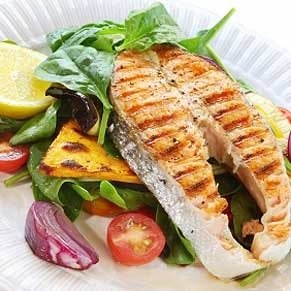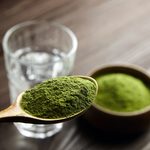The Health Benefits of Salmon
Find out why salmon is so healthy for you and get the scoop on how much of it you need to be eating for a healthier lifestyle.

How Much Salmon Do I Need?
Some people have expressed concern that farmed salmon has higher levels of contaminants than fresh, but researchers evaluating the risks/benefits of farmed over wild concluded that either is fine. If you eat more than two 150-g servings of fish per week, choose a variety of fish, not just salmon, to obtain the different nutritional benefits of other types of fish.
How much is enough: Two 150-g servings a week.
Buying right: Fresh salmon should look moist, shiny, bright and firm. It should smell sea-fresh, not overwhelmingly fishy. When fresh salmon is out of season it becomes expensive. Frozen salmon fillets or canned salmon are good alternatives. Canned salmon is a good choice because it contains more calcium due to its tender edible bones.
Healing Properties
Just two servings of salmon each week may reduce your risk of dying from cardiovascular disease by 17 per cent and your risk of having a heart attack by 27 per cent. And the benefits appear to go beyond the heart. A Swedish study that followed more than 6000 men for 30 years found that those who ate moderate amounts of fatty fish dramatically cut their risk of prostate cancer – by a third. And researchers recently found that people who had the highest levels of omega-3 fatty acids in their blood were 53 per cent less likely to feel mildly or moderately depressed.
What You’re Eating
Salmon is a healthier alternative to red meat and one of the best sources of omega-3 fatty acids, particularly EPA and DHA, which are nature’s heart medicines. Much of the salmon you see in supermarkets is farmed; in fact, farmed salmon outnumbers wild salmon by 85 to one. Most canned salmon is wild caught. Farmed salmon is fed a diet with artificial colouring to turn the fish ‘salmon’ coloured, because these fish don’t eat the krill and other tiny shellfish that give wild salmon its naturally pink/red colour. Nutritionally, though, it has the same benefits.



